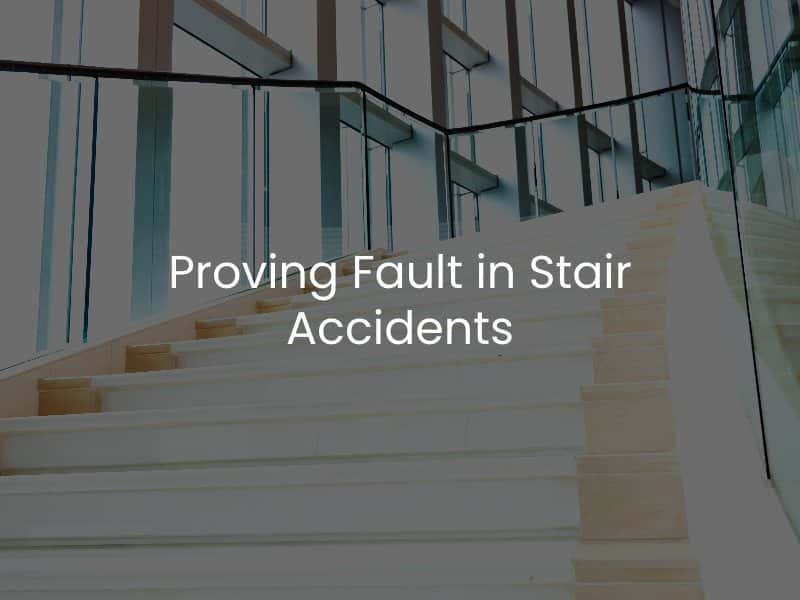Proving Fault in Stair Accidents
Stairs are everywhere, and they can lead to significant injuries if they are hazardous or defective. There are various ways that stairs can be dangerous for individuals. However, if an individual does sustain an injury on defective or hazardous stairs, they will have to prove fault in order to recover compensation from the property owner or the insurance carrier.

How do Stair Accidents Occur?
Stairs can be incredibly dangerous, and they lead to a significant number of injuries, and even fatalities, each year across the country. In many cases, stair accidents occur due to the careless or negligent actions of property owners. Data from the National Safety Council shows that approximately 1,000,000 injuries occur each year as a result of stairway incidents, and these accidents are the second leading cause of accidental injury (motor vehicle accidents are first).
The most common causes of stairway fall incidents include:
- Defects on the stairs or stairwell
- Improper lighting in the stair area
- Stair risers that are not visible
- Damaged or faulty steps
- Wet or slippery stairs
- Stairs without adequate gripping installed
- Defective handrails
How to Prove Liability
Stair injuries can occur in a variety of locations. This can include in individual homes, inside commercial establishments such as hotels or theaters, or at public locations, including courthouses or public parks. Determining liability for these incidents revolves around a few basic elements, beginning with establishing that there was a duty of care owed by the property owner to the injury victim. If the injury victim had a right to be in the location, then this generally means that the property owner owed them a duty of care.
After establishing that a duty of care existed, the cause of the incident will need to be determined in order to figure out if there was a breach of duty of care on the part of the property owner. For example, if the property owner knew about a potentially dangerous condition on the stairs, or should have known about the condition, and failed to take steps to warn guests or remedy the situation promptly, this will likely constitute a breach of duty.
After establishing a breach of duty, it must be shown that the breach directly caused the stair injury and that the injury victim sustained some sort of monetary loss. This can include medical bills, lost wages, out-of-pocket losses, and even pain and suffering damages.
Working With an Attorney
One of the number one priorities after a person sustains a stairway injury is working with a personal injury attorney who has experience handling premises liability claims. These cases can be complicated, particularly when it comes to determining the liability of the property owner. In nearly every stairway injury case, the property owner or their insurance carrier will push back against my ability claims. This may include denying the claim altogether or trying to limit how much compensation a person receives. These other parties may even try to place some or all the blame on the injury victim for the incident. A skilled premises liability lawyer will investigate the claim and push back against any allegations of fault while working to recover maximum compensation for their client.